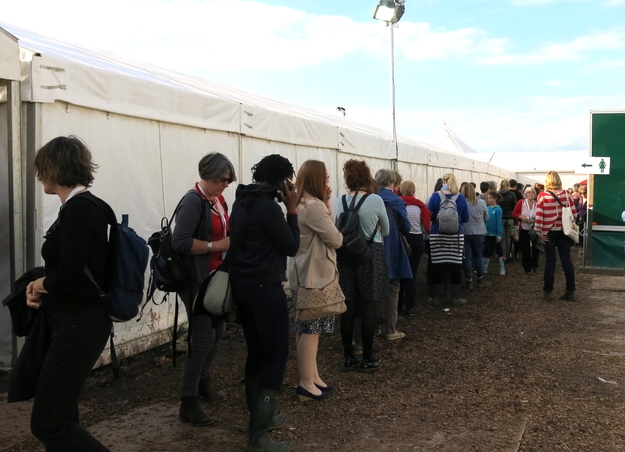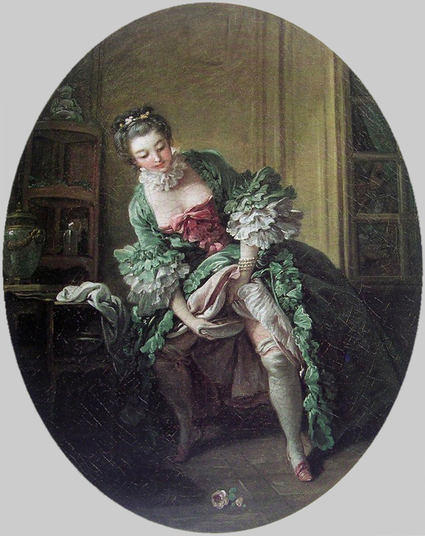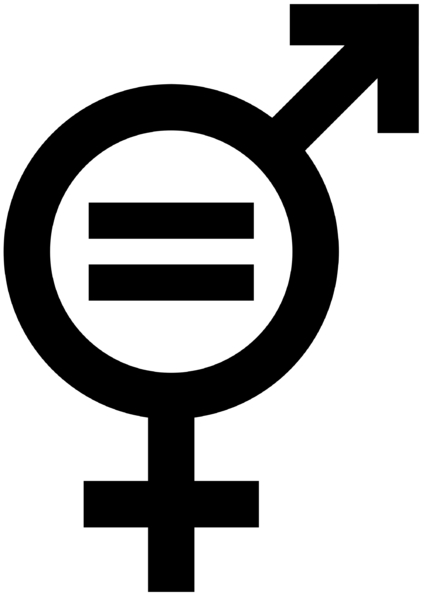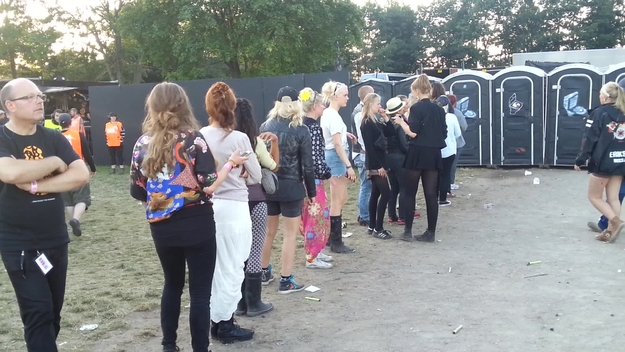If you are are a woman and you have the need to use a public toilet, you will think about it twice. It's a weighing up of the pros and cons: you have to consider if the relief you will feel thanks to an empty bladder will be worth the discomfort you will most likely experience. There are several reasons why using public toilets is often regarded as an unpleasant time, not least are the filth and lack of space. If you have a coat, handbag or backpack, you will have to balance yourself and cling onto these items since the floor is probably covered in unidentified threatening liquids. Furthermore, long queues are something women have learned to take for granted.
Queue for the public toilets - Women waiting in line in order to go to the ladies' toilet
The recurring joke is that women, unlike men, love to go to the toilet in groups and waste time chatting and perfecting their make-up. Well, that's only partially true: restrooms have indeed a social function for the so-called 'weaker' sex. Yet, this is not only in the sense of bonding. Going to the bathroom in a group is also a form of social protection, because there is a risk that a woman alone in a public place can be subjected to weird or provocative looks. Without company you often feel vulnerable, especially when you are in places used for socialising activities (cafés, restaurants, discos, festivals, concerts, and so on).
Nevertheless, those queues are there also because there is a lack of adequate restrooms for women. As a matter of fact, women need on average twice as long as men in the toilet and it is not because of vanity or due to chatting sessions: it's a combination of nature (shape of the body) and culture (less practical garments, child-care, discretion). Yet this is rarely taken into account when planning new facilities, so that it's not common to see more water closets for women than for men. Such a disparity is rooted in history, since women were supposed to take care of the home and not be outside, resulting in less toilets were needed for ladies within office buildings and in public spaces. If the need to go was urgent, the solution was represented by back-alleys or little byways. It was also a matter of decency: public conveniences brought to the fore the female body and its allegedly dirty functions, that is urinating, defecating, and menstruating.
La toilette intime - Une femme qui pisse, painting by François Boucher (1760s)
Moreover, as Barbara Penner points out in several essays, seeing a woman going to the toilet was a sign of her poor morality, insofar as public lavatories were associated with sexual activities. Not only did women have less access to toilets, they also prevented themselves to use them out of fear of negative judgement against their modesty. Therefore, building facilities for women was seen as a waste of money, whilst men's lavatories, being frequently used (at the cost of one penny), were much more profitable.
What is the moral of the story? If we reflect on the fact that everyday spaces shape personal and collective experience, highlighting in more or less subtle ways power relationships, then careful planning of the design, construction, location and visibility of public conveniences becomes crucial as well as political. Indeed, people now call for potty parity, which sounds like a joke, but it a very serious request with gender and health implications.
Equality - One of the symbols used to call for gender equality
Although debatable and debated (for example, in this article by Prof. John F. Banzhaf III), it's not just a feminist tantrum; it's an issue that has to do with more than the number of available toilets and this is something the Pis' Project wants to pay attention to, challenging established cultural meanings and spacial boundaries.
